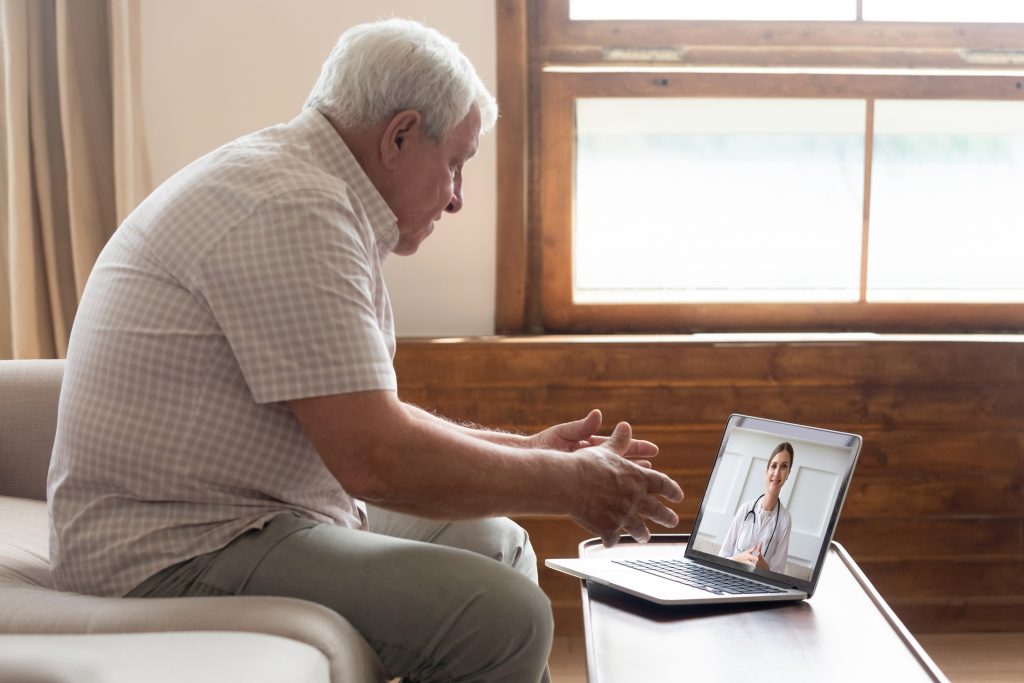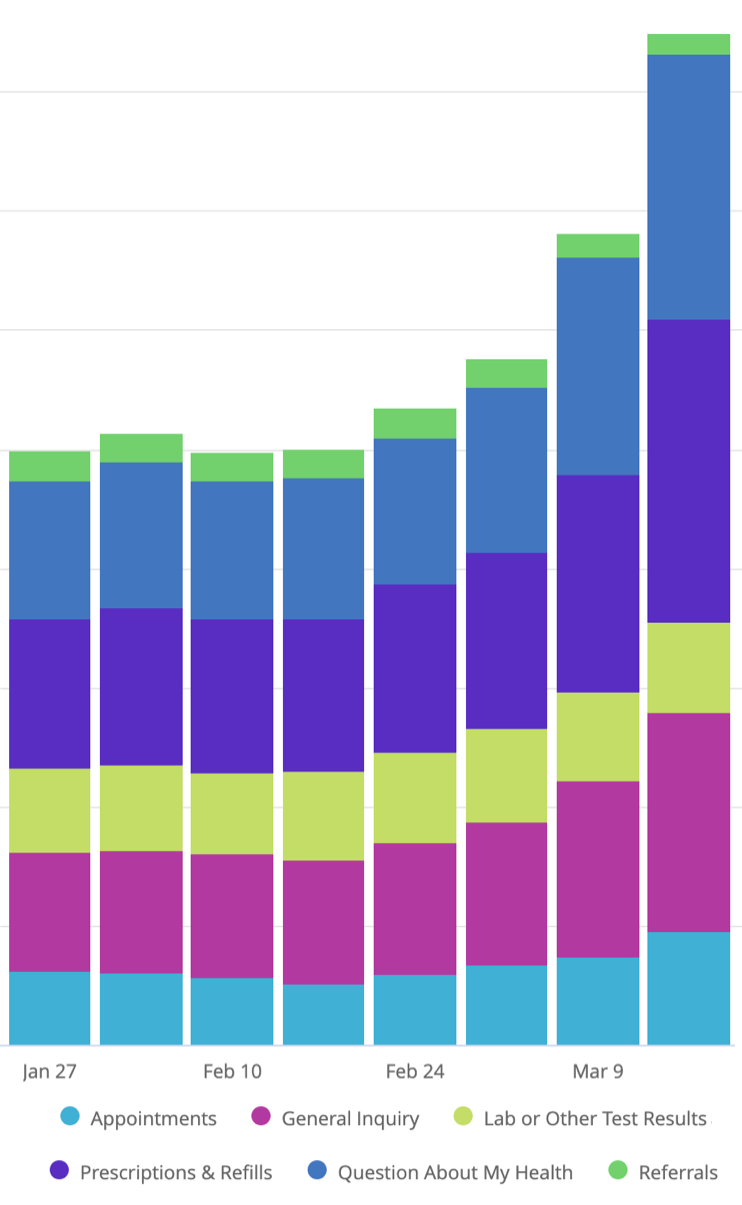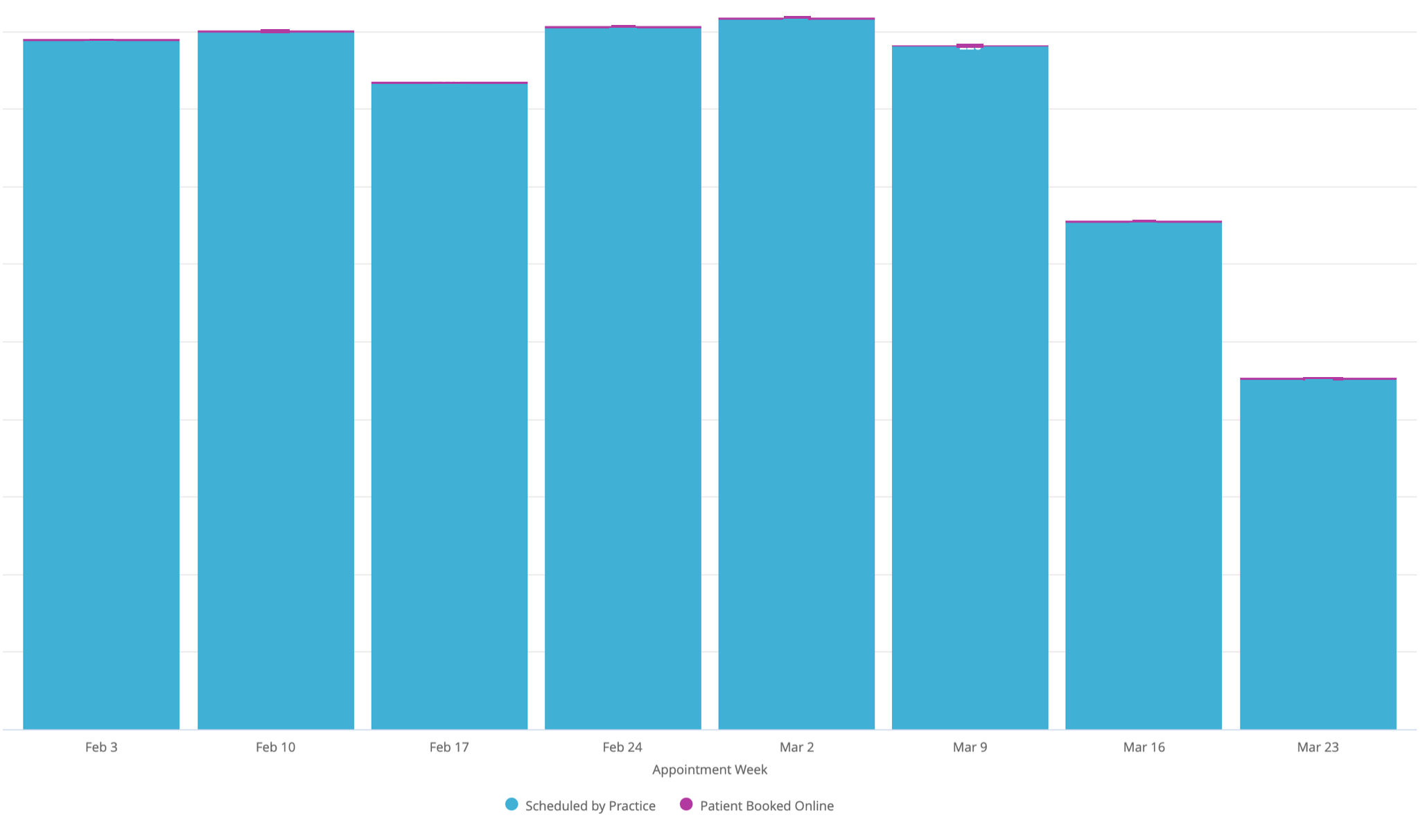Primary care and the coronavirus pandemic

There is a brewing crisis in primary care during this pandemic. Joining incoming AAFP CEO Shawn Martin and Aledade CEO Dr. Farzad Mostashari’s calls to help both sound the alarm and share what we can do to help. We work with 14k clinicians, reaching 7 million US patients. Here’s what we see.
Our independent primary care practices are managing a 60% increase in messages from patients. It’s good because they are able to safely help patients virtually. It’s bad because they get paid almost nothing for these touchpoints.

Physicians only get paid to reply to the “questions about my health” category of these messages. And at just ⅓ the reimbursement for a normal visit. As you can see, these messages make up less than a quarter of what practices are helping with right now.
Phone calls with patients are even tougher. A primary care physician gets just $12 for a 20 minute call with a patient. Most don’t even bother charting or billing for it. We’ve seen a 30% increase in phone calls, and that is likely significantly underreported.
At the same time, patient volume for regular appointments and preventative care has dropped 25% in a week. This is the core service these physicians provide to their patients, many of whom are chronically ill, and the work that keeps their practices afloat.
 We asked our practices what they need and they said: “Authoritative guidance on safety for staff in the office,” “supplies,” “childcare,” “member skill in working remotely,” and “ease in communication” as “phones are ringing constantly.”
We asked our practices what they need and they said: “Authoritative guidance on safety for staff in the office,” “supplies,” “childcare,” “member skill in working remotely,” and “ease in communication” as “phones are ringing constantly.”
They need to rapidly transform to providing telehealth if they’re going to keep their staff paid and doors open. One of our OB practices has seen a 30% drop in visits in just one week and may only have 2 months of runway.
Even with the financial future so uncertain, we’ve seen primary care doctors rush in to help. I know of at least six Direct Primary Care (DPC) doctors who had left insurance to run membership practices now coming back to help care for non-member patients in this pandemic.
These independent primary care practices are putting their own health and financial futures on the line to do what is right for their patients during COVID-19. They’re answering phone calls, visiting patients, taking care of the highest-risk and elderly.
Primary care provides critical front-line capacity for triage, outbreak detection and managing chronically ill patients who struggle even outside of this pandemic. Especially the independent practices often working in areas where there’s the least patient access to care.
How can we help? Join AAFP, Aledade, The American Medical Association and others in encouraging the stimulus plan to support independent primary care. Find ways to help doctors easily get paid for the care they’re delivering and shift to staying afloat as a virtual practice.
More to come in this conversation. Our team at Elation Health is working hard to help our community of primary care practices get through this and we’re learning more everyday.






